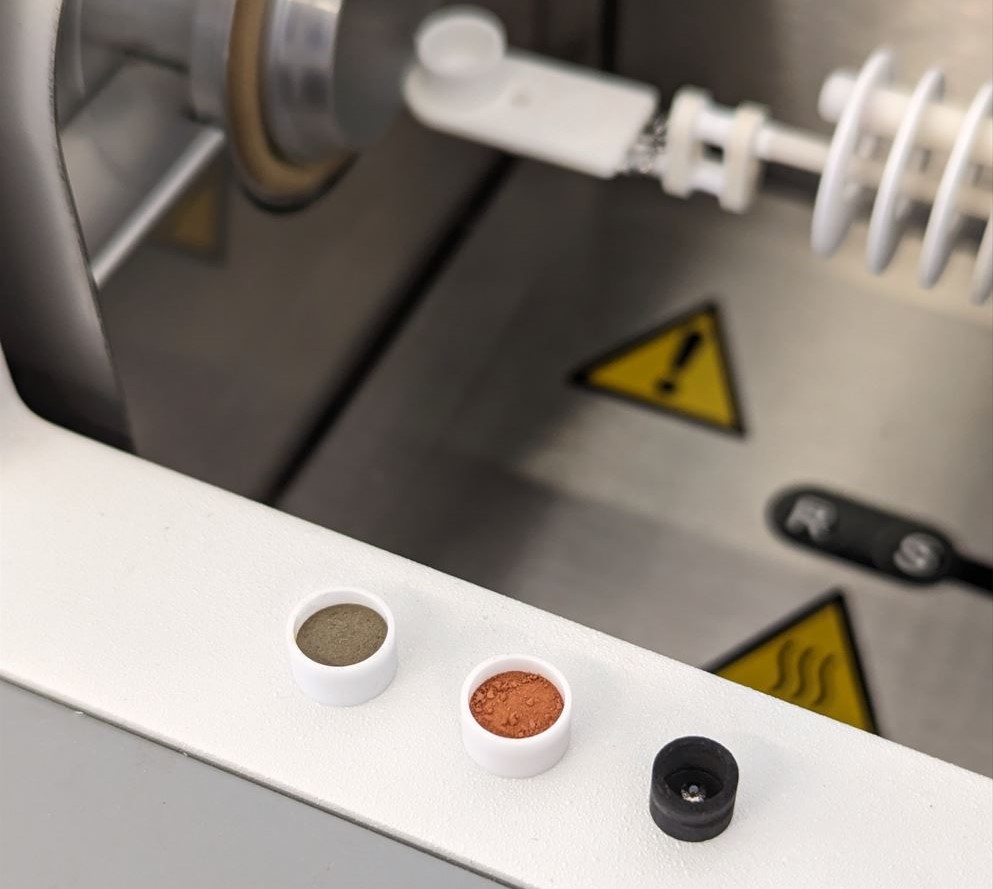The sewage sludge melting and reduction experiments aim to understand how sewage sludge behaves under the same conditions as in the FlashPhos process. Crucial parameters like operating temperatures, expected yield, and reaction times were derived from the experiments. These parameters are useful for designing the plant as well as for process simulations and for selecting the experimental conditions in pilot plant test campaigns.
How is the melting and reduction behaviour analysed?
To investigate the sewage sludge’s melting and reduction behaviour, a TGA/DSC instrument is used, which combines Thermogravimetric Analysis (TGA) and Differential Scanning Calorimetry (DSC). In other words, with a TGA/DSC, it is possible to simultaneously detect thermal events, such as the melting of a sample, while monitoring its mass changes as a function of temperature or time under different atmospheres. With this method, changes occurring in a material under different temperatures and different atmospheres can be detected. Using the phosphorous-containing raw material and reducing agents, the reaction and kinetics of the melting and reduction process of the sewage sludge can be investigated.

TGA/DSC instrument
How are the results from the TGA/DSC applied?
The insights gained through the TGA/DSC device are needed to steer pilot operations and upscaling decisions, such as in the Flash Reactor and Refiner.
For example, heating the sewage sludge results in volatile material being released in considerable quantities, as indicated by the weight loss registered through TGA. This evaporated material ignites at relatively low temperatures, which is important to consider for the combustion process design in the Flash Reactor. Additionally, determining the melting temperature of the sewage sludge ash via DSC allows us to set the minimum temperature for the Flash Reactor operation.
The TGA/DSC apparatus also assists in understanding the reaction kinetics of the sewage sludge and its reduction to obtain the main product of the FlashPhos project, white phosphorus. Determining the extent to which relevant parameters affect the rate of reduction of the sewage sludge ash, such as particle size of reducing agents and process temperature, can be applied to optimize the Refiner operating parameters.

TGA/DSC crucibles with dried sewage sludge, sludge ash, and reduced slag

Resulting TGA and DSC curves of the combustion of dried sewage sludge
For further information contact
Sander Arnout
Managing Director at InsPyro
sander.arnout@inspyro.be
+32/16.298.491
Davide Messina
Process Engineer at InsPyro
davide.messina@inspyro.be

